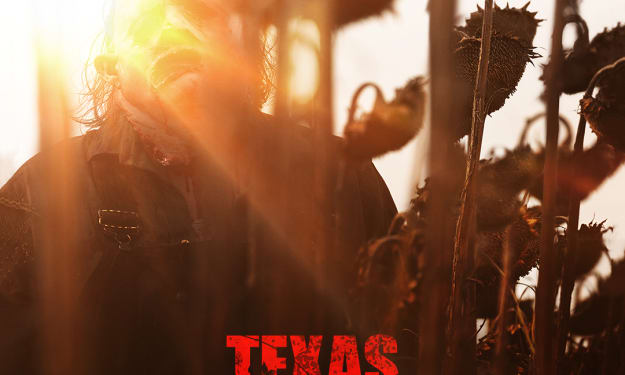TRUTH OR DARE (2018) Sucks. Let's Fix It.
This horror movie isn't very good, but it could have been entertaining. By analysing what went wrong, maybe we can prepare ourselves for the future.

I can point to the exact moment I gave up on Truth or Dare (2018). That's not to say that I stopped watching the movie at this point. I just stopped caring. There was one scene that was so profoundly stupid that it entirely undermined the entire horror movie, and at that point I just could not remain invested no matter what came next.

Let's Start From the Top, Shall We?
Truth or Dare begins in pretty standard horror movie fashion: the prologue sequence where someone gets murdered so that we know that this will be that type of movie. You've seen this scene before if you're at all familiar with the genre. We open on an anonymous person, and before you know it we're seeing shocking violence, and then we cut away to the real protagonist of the film.
Is it inventive? No. Is it functional? Sure.
Honestly, I don't mind this aspect of the movie. Whenever you write anything, you can't reinvent the art form from the very start. Sometimes tricks end up becoming tropes just because they are really good at doing their job. The horror movie prologue is really good at grabbing the audience's attention and making promises off the start of the movie.
What kind of movie is this? The sort of movie where a woman lights another person on fire. We're off to the races.

As I said, after the violent prologue, we meet the real protagonist of the film, and she doesn't take more than a couple of sentences before she is stressing the importance of choice. You are an attentive movie-viewer, so your antenna immediately shoot up. Hoo-hoo, sounds like we've got a theme on our hands.
Then the protagonist makes some bad choices. She chooses to go on spring break in Mexico with her friends rather than volunteer with Habitat for Humanity. She chooses to cover for her friend when her friend cheats on her boyfriend. She chooses to go off into the wilderness with a weird dude who she just met, and she chooses to play a game of truth or dare in the most obviously haunted monastery imaginable.
Choices!
Wouldn't you know it? She just caught a bad case of demon-possessed childhood games, and now she (and her friends) is stuck playing truth or dare or the demon will kill her.
Whoops.

And up until that point, I have been willing to go along with the movie. Sure, it isn't great. The writing is a little on-the-nose, and the general structure of the thing is just a little generic, but if this movie's greatest sin were being generic, I wouldn't feel compelled to write this.
The protagonists try to come up with strategies to deal with this demonic game, and eventually they settle on an easy way out: every should always pick truth when the demon offers them their choice, because while the truth might be uncomfortable, at least it won't kill them.
Here Comes the Scene that Ruined the Movie
The demon announces in the middle of one interaction that this person cannot choose truth. They must choose a dare. A new rule is added to the game: only two people can choose truth in a row before the next person the demon confronts must choose dare. An explanation is eventually given for why this is the case, but at this point the movie's logic no longer matters, because the audience feels like the movie is just making things up as it goes along.
Of course, that's a deeply ironic sentiment: the movie is a work of fiction. There isn't really a demon, and none of these characters are really real. The writers were always just making it up as they were going along, but that's not the problem. The problem is that it now feels like writers are just making things up as they were going along.
In most good movies, the way the story is told will create the illusion that this really could happen. We can suspend our disbelief and pretend that there isn't a writer behind the curtain, manipulating the actions of all of the characters. We know this is an illusion, but it is convincing anyways.
From this point forward, it is impossible not to feel the writer's presence in the movie.

Take the sex scene, for instance.
Some characters in the movie are dared to do horrible things. In fact, most of them are. There's a threat of danger. There's a real possibility of fatal outcomes a lot of the time. In one of the more intense scenes, a character is dared to steal a cop's gun from the cop and make the cop beg for his life. The demon who is presenting them with their dares is not messing around.
The demon is a presence of chaos, so these dares feel logical within the movie's rules.
What feels less logical is the sex scene. One character is dared to have sex with another character... who just happens to be in a relationship with someone else. Is the scene gross? Sure. However, it isn't filmed like it is meant to be gross. The music in the background is softly romantic. The characters have been yearning for each other, even if they know it is not meant to be. Why did the demon choose to do this? Well, it feels like the demon chose to do this because the writer wanted him to.
And hey, a sex scene (even if it doesn't fully make sense) always helps round out a movie trailer. Wouldn't you know it? Clips from that scene are in the trailer. What a surprise!

By the end of the movie, nothing feels real, so there are no stakes when it comes to the showdown.
It's a Bad Movie
On IMDb, it has 5.2 out of 10 stars across 55k votes. Rotten Tomatoes is even more brutal, giving the movie just 15% positive reviews from critics (with an average score of 3.8 out of 10). The Rotten Tomatoes fans aren't much more generous, with only 22% giving the movie a positive score.
It was cheap, and it made money, so I wouldn't be surprised to see a sequel in the future, but I struggle to believe that this sequel will be terribly successful since so few people enjoyed the first movie.
However, I'm not here to predict the future of the franchise. I'm here to offer one solution for how Truth or Dare could have been a good movie, and hopefully in the process we can all learn a few things about making stories work.
Problem #1

The glaring problem at the centre of the movie is the scene where the characters learn that there is a new rule stipulating when they can or cannot choose truth or dare. There are a couple ways to fix this, and either of them will make the movie substantially stronger.
Solution 1-A
Rather than spring this on the characters as a cruel twist, instead give them this information up front. In the scene where the characters first involve themselves in the haunted game of truth or dare, there is a character there who already knows what is going on. He presents them with some information, and frankly, the whole movie would work better if he laid out the rules right there.
Don't get me wrong: exposition dumps are messy, and no one is going to be that excited to have an extended scene where all the rules are explained, but that one scene can then charge all of the interactions that happen going forward.
For instance, when one character chooses truth, the audience would know that they are forcing one of the other characters to take a dare. Then, when that other character gets screwed, it doesn't feel like the writer forced that on the character. Instead, it feels like the character is suffering the consequences of another character's action, and that feeling helps to maintain the illusion that this is really happening.

If you give the audience this information up front, you sacrifice the possibility of surprise (and you probably want surprise in your story!), so writers often hesitate to introduce too much information too quickly. However, this raises an illustrative point about the difference between surprise and suspense.
That difference was best explained by legendary suspense filmmaker, Alfred Hitchcock:
Let's suppose that there is a bomb underneath this table between us. Nothing happens, and then all of a sudden, "Boom!" There is an explosion. The public is surprised, but prior to this surprise, it has seen an absolutely ordinary scene, of no special consequence. Now, let us take a suspense situation. The bomb is underneath the table and the public knows it, probably because they have seen the anarchist place it there. The public is aware the bomb is going to explode at one o'clock and there is a clock in the decor. The public can see that it is a quarter to one. In these conditions, the same innocuous conversation becomes fascinating because the public is participating in the scene. The audience is longing to warn the characters on the screen: "You shouldn't be talking about such trivial matters. There is a bomb beneath you and it is about to explode!"
Remember: this was a guy who knew a thing or two about suspense.

Horror is a broad genre. Some horror stories seem content to just splash as much blood and viscera on the stage and call that horror. However, to invoke suspense, a lighter touch is required.
So, let's imagine Truth or Dare again in a world where the audience knows the rules going into it. We know that the characters are taking turns, and we know the order the turns will come in. Character A is confronted by the demon. They choose truth. Character B and C start to squirm. The demon reappears. "Truth or dare?" Character B swallows. Character B looks to Character C. We understand the choice they are making: My life or yours? The demon insists: "Truth or dare?" Character B can't look at Character C any longer. The demon is going to force the issue. Just as they are about to run out of time--
"Truth!"
Character C looks on with an expression of betrayal, and the audience knows what must happen next.
By informing the audience, they're invited to participate in the scene. We lose the element of surprise when the demon starts introducing new rules, yes, but the story feels more organic and we gain a great deal in the way of suspense.
Solution 1-B
The other way to solve the problem with this disastrous scene is simply to remove the rule.
In the past few years, we've seen a number of horror and horror-adjacent movies play with the idea of children's games. Ready or Not took the idea of hide-and-seek and added fatal consequences. Squid Game took a variety of children's games and turned it into a dystopia. The Escape Room movies add death to escape rooms... to varying results, naturally.
When these stories are effective, they often rely heavily on using their source material wisely.
It will always be a little bit silly to watch a horror movie about a children's game that's been haunted by a demon, but the successful entries in this sub-genre show that this isn't impossible. It's only impossible for Truth or Dare because the story doesn't know how to actually incorporate the game.
Because of that, it largely ends up just being... Dare. And without the element of choice, it just feels like a watered-down version of The Ring with a couple added steps.
So, how do we fix this problem?
The movie needs to find ways for truth to be as frightening and interesting as the dare side of the equation.
The thrill of the childhood game comes from the knowledge that you're choosing between two options that are both bad (even if they are only mildly bad, because ultimately the game is just a game). You can either choose truth, and be forced to admit that you have a crush on a particular classmate, or you can choose dare, and be forced to prank-call that exact classmate.
For the movie to use the truth side of the equation effectively, it would have to come up with truths that would actually effect the plot in an interesting way. Instead, the truths just become ways for the movie to offload the effort of explaining the characters' backstories.
Multiple times in the movie, one character admits a truth that causes another character to walk off in a huff. But guess what? The writers don't know what to do about that, so reconciliation is never far behind. This leads these scenes to feel like plot cul-de-sacs. Sure, there's a road there, but it's not going anywhere.

What if, instead, a character whose trust has been betrayed then decides to get revenge? Or they simply don't help when their help is needed? Or they retaliate with a truth of their own, and now the characters are truly enemies?
These would all create the feeling of stakes.
And if we add in a dash of solution 1-A, maybe we have the audience know some of these secrets in advance, so we are dreading the moment when they come out.
Instead, all the audience knows is that one character is afraid of admitting the truth about something, but we don't find out what that something is until the truth is eventually forced out.
Problem #2
Who is pulling the demon's strings?

This is the problem that manifests when the demon has the sex dare. The plot feels contrived, like the movie needed a sex scene, so the writer found this way to wedge one in. Aha! The demon made them do it!
Solution 2-A
Characterise the demon.
Compare the demon to other supernatural monsters like Pennywise from It. Pennywise isn't given a ton of lines in the movie or the book, and most of what he does say is just intended to be creepy. However, the audience learns that Pennywise feeds on fear. He has a goal. The audience can begin to evaluate his decisions through his (admittedly evil) series of objectives.

If the Truth or Dare demon was given more characterisation, maybe the various challenges throughout the movie would feel more like an expression of the character rather than just an expression of what the writer needed to happen to drive the story forward.
Instead, the movie relies on the fact that it is a demon to just allow anything to happen. The demon wants the gay character to come out to his father? Okay, sure. Why not? The demon wants another character to set a woman on fire? Sure, fine, whatever. All of these choices feel random, but we know that there is no such thing as randomness in a story.
Randomness in a story is just the writer showing their hand.
Solution 2-B
Go meta!
Think of another gratuitous sexy scene from a horror movie. In fact, think of a specific gratuitous sexy scene from a specific movie: Cabin in the Woods. Two of the characters have sex, unaware that they are being observed by the bureaucratic forces that are secretly manipulating the events of the movie.
While the observers are definitely creeps, they don't seem particularly titillated by what they are seeing.
One asks, "Does it really matter if we see it?"
The more experienced workers assure him that this must proceed as planned. "Gotta keep the customer satisfied."
Who is "the customer"? Well, it's the audience for cheap horror movies, the audience that demands that the hot blond do a sexy dance with the wolf-head and then strip off her clothes in the woods.
Cabin in the Woods is a horror movie about horror movies. So it is happy to bring in these characters who are the embodiment of the filmmakers themselves. Someone is manipulating this action. Someone is forcing this to happen in order to appease "the customer."
It would require Truth or Dare to be a much smarter movie to follow in those footsteps, but it would also become a much better movie in the process. If the movie took a step back and realised that this could be commentary on something much bigger than the movie, it would require a lot of really smart writing to make that effective, but the movie could have been much more than what it was.
Why aim low? People still talk about Cabin in the Woods more than a decade later, despite the fact that the movie never received a sequel. Will people care about Truth or Dare a decade after it came out?
Conclusion
When people talk about bad movies, we tend to talk about surface-level symptoms. Bad actors are criticised, despite the fact that often they are receiving bad direction or a bad script. Weak scenes are criticised for their plot-holes when fixing those plot-holes would leave a bland film anyways.
I hope with this article we've dug a little deeper than that. Make no mistake: if any of these solutions were implemented, the entire script would need to be re-written, and even then it might not be an incredible movie.
However, this concept could have led to a good movie, but the audience did not receive a good movie. As recently as 2020, Blumhouse productions indicated that they were still interested in creating a sequel to this movie. Let's hope that if that ever comes to fruition, the final product is considerably better than their first attempt. And if not, hopefully all of us who were disappointed by Truth or Dare can learn from their mistakes so we don't repeat them ourselves.

If you enjoyed this post, please consider checking out some of my other writing. If you like what you see, I'd appreciate it if you left a like and subscribed.
About the Creator
Littlewit Philips
Short stories, movie reviews, and media essays.
Terribly fond of things that go bump in the night.






Comments
There are no comments for this story
Be the first to respond and start the conversation.